Fat chance
For a long time obesity has been an epidemic in more than half of the world. Why is the fight against it so hard?
You step onto the square thing, the cogs turn, the computer chips process the information and those numbers pop up in front of your eyes, making you puff nervously or verbally express your worries like only people on the Balkans can. In spite of all your efforts in the past week you have still gained a few kilos. You feel heavy, clumsy, and unattractive.
That stresses you out, making your blood pressure and blood sugar rise and, having starved for a week, you find yourself craving food to make up for all the suffering. And it sounds so easy, doesn't it? Eat less, exclude fat and sugar from your diet, walk a lot to your workplace every day and there is no way you are NOT going to lose weight…
Then why is it so difficult? Why are more than a billion people around the world overweight? And this is not just about your self-confidence or sex-appeal, but it can cause a wide array of diseases, some of which potentially life-threatening.
In the past decade alone, more than 25000 books have been published on the topic – on diets, on various approaches and on secrets. Most of them turn into best-sellers – that is how important this topic is for so many people.
There is no way to fit it all in the following pages, not even a tiny bit of it, but we will try to summarize what is most important. Why is the fight against obesity so hard and what are the most common mistakes we make? Why is it important to lead that unfair fight and what do we risk if we fail to win? These questions need and will receive their answer.
Kilos by the dozen
Genes, bad lifestyle and stomach bacteria are to blame for our obesity and that can be dangerous Over the last years our population has been shrinking. Yes, we do hear that cliché quite often and we do love repeating it, never pausing to thin how inaccurate it actually is, at least when it comes to the literal size of our population. We are used to mocking the West for their obesity and unhealthy eating habits; although it seems that we are desperately trying not to fall too far behind.
What we are dealing with here is a problem, which is gradually becoming global. However, it was only a few years ago that that the UN officially reported that the number of people suffering from the consequences of overeating already exceeds the number of those who do not have enough to eat.
What this means is that we have yet to see the full scale of the problem in many countries. According to the most recent data, 1.4 billion people aged 18 and above are overweight (out of a total of 7 billion) and at least 300 million fall into the obese category. At least 3 million adults die as a direct consequence of obesity each year.
This is data announced by the World Health Organization which recently appealed to world leaders to take action. The health hazards resulting from obesity are comparable to those of smoking. Unlike obesity, however, smoking is much more often given special attention by the government despite the fact that no other health hazard has been increasing at such alarming rates over the last decades.
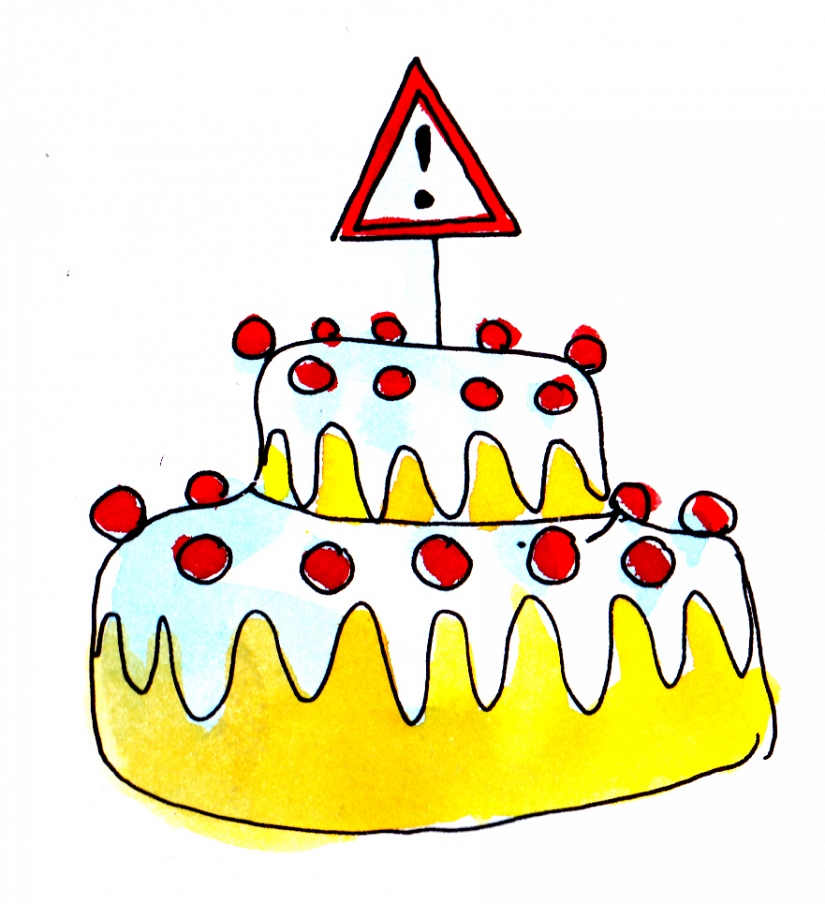
Going back to our local reality, the situation is not any brighter. The latest statistics available, dating a few years back, reveals that approximately two thirds of Bulgarians are overweight. This problem was virtually unknown in this region of the world until very recently, mainly owing to the fact that traditionally we used to eat healthily and in moderation. And while we are still trying to get our bearings in this new situation, we are on the verge of dragging down the next generation with us.
Excess weight in children is the most dangerous and the most difficult to combat. According to data gathered in 2010, 40% of adolescents aged 15 and above and 10% of the children are out of the normal body weight range. That is twice as many as a decade ago!
Kilogram limits
The most common causes of death in Bulgaria are heart disease (2/3 of all cases) and cancer with 13-15% of all deaths. Suffice to say that both are closely connected to weight. But enough with the frightening figures. In order to better understand what those numbers actually mean, let us explain what exactly what they signify. To the unacquainted, it might seem easy to determine whether a person truly is outside the healthy standards. Over the last few years the Body Mass Index (BMI) has been widely accepted as a valid criterion.
It is calculated as the weight is divided by the height squared. For example, if you are 1.70m tall, which squared equals 2.89, and you divide your body weight, for instance 70kg, by this result, you have a BMI of 24. It is precisely BMI that is the criterion the above-mentioned statistics are based on. It varies slightly for the different races but for the Caucasians the normal range of BMI is fixed at 18.5- 25. In case of a BMI of up to 29.9 we speak of being overweight, any higher would indicate different degrees of obesity.

'This is an over-generalised criterion which can only be used as guidance' explains Dr Maria Nikolova, specialist in nutrition science and dietetics, assistant professor at the Medical University of Sofia. "If a person is within this range, it does not necessarily mean that they have normal body composition. They might have elevated percentage of fat at the expense of active muscle mass.
The same applies for those outside the normal range. A man who works out has higher body weight owing to his muscle mass – for him that is definitely not a problem." For these reasons other criteria have gradually been included to more accurately assess each person's condition. There are more and more modern scales able to measure the percentage of fat in the body.
Trans-danger
One of the main causes of obesity as well as of other socially important diseases is the excessive consumption of trans fatty acids, which are the artificially hydrogenated vegetable oils incorporating themselves permanently into cell membranes. This is a chemical process during which fats are processed and artificially enriched with hydrogen atoms. If you pay close attention, you can easily identify them; they stick to the palette, to the teeth, the sensation is totally different. Trans-fatty acids are particularly dangerous for children, who are prone to choose the foods which contain them, such as chocolate, candies, sweets, waffles, deep-fried foods and chips.


Not hunger, but thirst
Liquids are of crucial importance in losing weight. People often mistake thirst for hunger. The problem is that the feeling of thirst comes when you are already 10% dehydrated. The lack of liquids in the body slows down metabolism; it can affect our concentration and ability to work or cause discomfort. Therefore the absolute minimum of water intake per day is six to eight glasses or two litres daily. Water is our best assistant when losing weight. In the process of burning fat a number of waste products such as purines, fatty acids and ketones are also released in order to be excreted through the liver and the kidneys.
A new hit
The Zone Diet has become very popular lately. It was created by dietitian Barry Sears and to a large extent it relies heavily on what we are sharing with you on these pages. The doctor's motto is "Eat and you will lose weight" with a balanced combination of protein, carbohydrates and vegetable fats at the core of his system. The main rule is that carbohydrates should constitute 40% of your diet while protein and fat should be 30% each. Foods are divided into two blocks: a protein block and a carbohydrate block. It is recommended that you alternate between them, consuming an equal number of blocks from each group. The doctor offers various combinations which observe this ratio and promises a weight loss of 5 kilograms in two weeks. The strange name of the system is derived from the idea that there is state in which the organism operates most efficiently.
Electronic measuring is probably the most common method – a weak imperceptible electric current is run through our body and special detectors record its resistance. As the resistance varies depending on the type of tissue, the total percentage of fat can be determined. Of course, this method is not very accurate, but it is sufficiently accurate for check-ups and monitoring.
Fat mass in the body is measured either in kilograms or in percentage terms. It is usually divided into subcutaneous and visceral fat, which is the medical term for the fat deposits around the belly. Visceral fat is measured in absolute terms, with the norm being between 1 and 14. What does this number signify? If it is three, for example, then that means that you have 30cm2 of fatty tissue distributed around your organs. Waist circumference is, according to doctors, another simple, yet effective criterion. Both are related to what is probably the greatest downside of being overweight – what we lovingly call the potbelly.

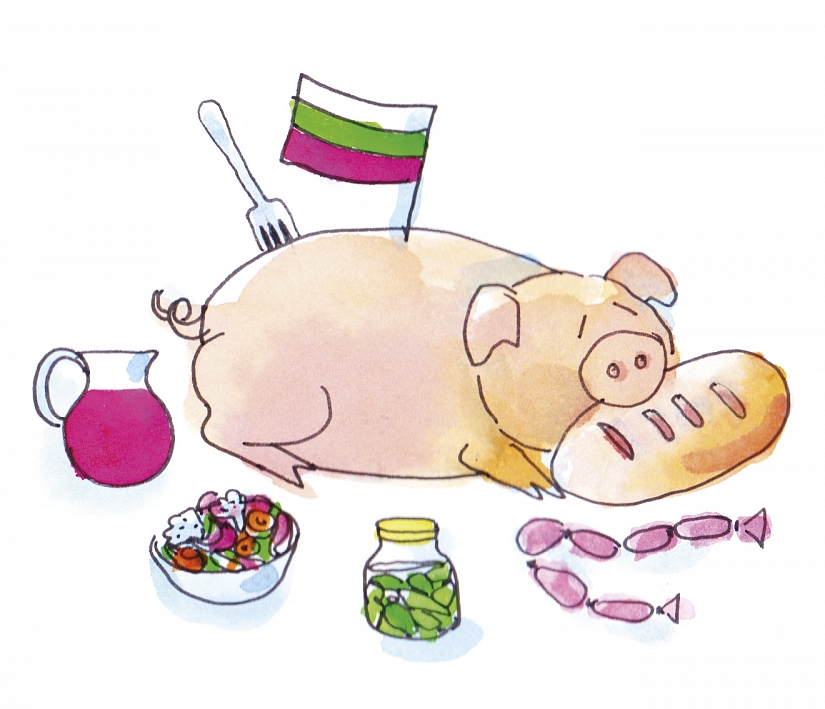
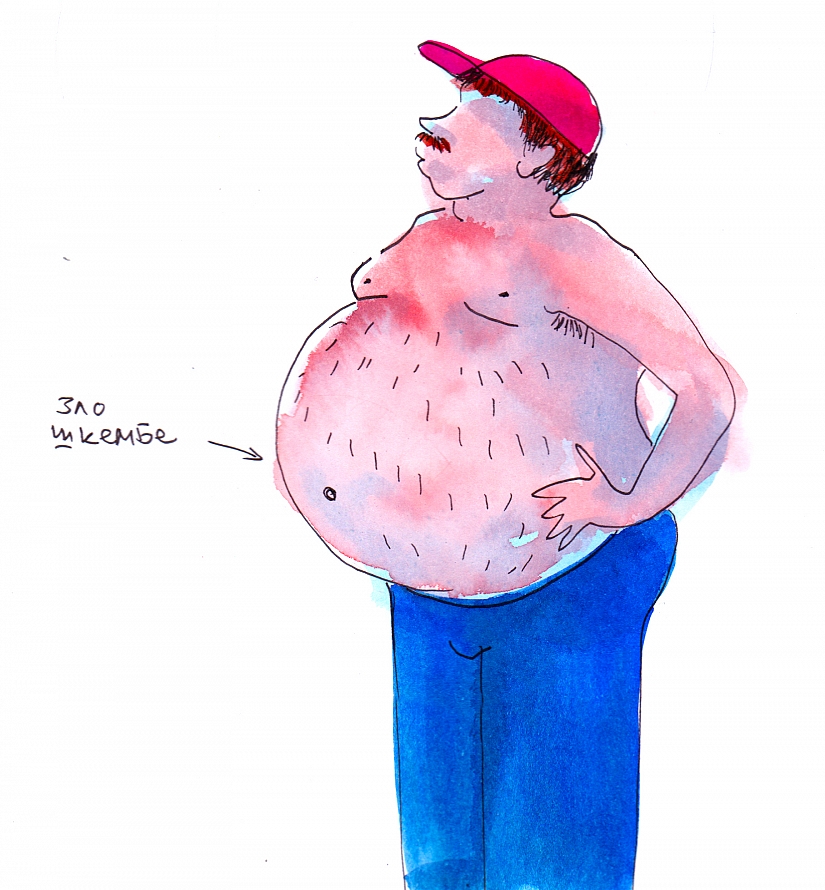
Evil belly
While just a decade ago doctors considered each kilogram over the standards as problematic, nowadays they are of the opinion that it is belly fat the poses the greatest risks. The fatty tissue gradually enwraps the organs and not only does it hinder their normal function, but it also begins to function as an entirely independent endocrine gland – it secretes hormones which have a devastating effect on the body, inflammation factors, prostaglandins and interleukins, which disturb the entire metabolic process, Dr. Nikolova explains. Subcutaneous fat, which we do not like either, is much less harmful. It is just a depot where excess calories are stored in the form of fat. However, other than making us feel heavy, they do not pose a direct threat, unlike the fat stored around the belly.
The children of hydrogen and oxygen
Now that we have "scared" you with all this information about carbohydrates, a further explanation is in order. Chemically speaking, they are composed of carbon, hydrogen and oxygen. Apart from water, they are the main building blocks of organic matter; if you simply dry them, they would account for 20% of animal weight and 80% of plant weight.
The foods richest in carbohydrates are sweets, fizzy drinks and bread as well as fruit, pulses, potatoes, rice, maize, oats and cereals. While they indeed do bring energy not a single carbohydrate is essential for our body. Here is the carbohydrate content of some foods in percentage terms: spaghetti – 75%, white rice – 73%, popcorn – 68%, corn – 65%, wheat – 65%, chips – 53% white bread – 48%, rye bread – 40%, French fries – 35%, boiled potatoes – 14%. We should not forget, however, that glucose is the only source of energy for the brain. The daily carbohydrate intake should not be less than 180 grams.
Intolerance
A common reason for being overweight are nutritional intolerances. These are a particular type or allergies - mostly to artificial food additives - like the dangerous E-labelled additives we have already told you about in 8 magazine.
Many people are unaware that they have developed food intolerance - it does not show on regular laboratory tests and can only be detected by the increased number of antibodies. It could happen even to people who are extremely careful and whose diet consists almost entirely of organic foods. These are delayed immune reactions of the body. Antibodies are formed, which disturb the normal energy processes in the body. This leads to weight gain, as well as to other problems such as abdominal swelling, problematic skin, persistent headaches and depression.


Spring colours
While welcoming the arrival of spring, it is advisable to follow several recommendations when it comes to weight gain. It is important to boost our immune system, dietary specialists recommend. A diet rich in calories or carbohydrates suppresses it. The immune system is boosted in the first place by complete or whole proteins. Foods rich in vitamin D and sunbathing are also beneficial. Although we are a relatively warm country, 76% of Bulgarians have a vitamin D deficiency.
Vitamin D not only promotes bone health, but it also helps prevent autoimmune diseases, 14 types of cancer, diabetes... and, of course, obesity. Naturally, we all know that we should include more fresh fruit and vegetables into our diet. Here the colour principle applies – it is good to alternate between the green, the yellow and the red gifts of Nature.
Today the generally accepted waistline standards, above which there are potential health risks, are 94 cm for men and 80 for women. If the measurements exceed these limits, this is an indication for a problem called metabolic syndrome. Doctors are convinced we will be hearing more and more about it in the future, precisely because of the increasingly common problems caused by obesity.
Once present, the metabolic syndrome increases the risks of coronary disease - high blood pressure, strokes, heart attacks and several types of cancer, particularly those affecting the colon and the female reproductive system, diabetes, gout, non-alcoholic hepatitis... Studies show that reducing the weight by 5 to 10 kilograms decreases mortality rates by a staggering 25%!
Alas, as nearly everybody perfectly well knows, belly fat is the hardest to get rid of. If one reduces one's overall fat by 10% that will lead to only 5% less visceral fat.
Modern medicine, though, recommends that we should not be seduced by the promise of rapid weight loss, because it is unhealthy for our bodies." People come with unrealistic expectations and wishes - to immediately drop from 90 to 70 kilograms. That is neither realistic or achievable, nor healthy. The healthy rate of weight loss is half a kilogram to one kilo per week' Dr. Nikolova says, drawing on her experience. According to her, with the exception of particularly severe cases, even a 2-3 kilo loss may have unexpectedly strong influence on all the above-mentioned complications related to obesity diabetes type 2, hypertension, lipid level disturbances.
Not a goal but a journey
'I will never get tired of saying this - losing weight is a journey, not a destination,' explains Dr. Nikolova. People should arm themselves with patience and should not expect quick results, which, according to her, is the most frequent obstacle preventing them from effectively coping with the problem.
Perseverance is also important so that weight gain does not recur. Eighty percent of those who seek help and successfully overcome their obesity regain the lost weight in the next 3 to 5 years. That is why there has been an ongoing discussion of the participation of psychologists in the work of dieticians. Ever more often, obesity is being classified not only as a physiological, but also as a psychological problem - a food disorder, classified in the same group as bulimia and anorexia.
It is not unusual for a problem with excess kilograms to conceal a psychological problem related to a depression or low self-esteem. That is why in many western countries like France, a visit to a dietician begins with a simple psychological test. The patient is given a questionnaire, where the answers are arranged in five groups, covering, respectively, the level of self-esteem, body image, depression, inability to express emotion and self- sufficiency. Once the lowest indicators are pinpointed, the next step is a consultation with a professional psychologist. Only when all five criteria return to standard is a diet recommended as a result.
All this is an attempt to identify the factors which can impede change, for, as dieticians say, 50% of the success lies in finding out why the patient has gained weight in the first place. It is not by chance that such a lot of emphasis is placed on control – control by a dietician on the one hand, and on the other - by the patients themselves.
Fats & evolution
By the way, you have probably never heard of an obese lion or a deer - Nature is far from benevolent towards both predators and prey. Still, nowadays animals are beginning to get fat as well - it was not that long ago that treadmills for cats and dogs became popular in the US... Hence it is obvious that the problem stems from civilization, which has brought about both sides of the fat coin - hyper-energy food and sedentary lifestyle. And here comes the logical question – what is the role of evolution here? Wasn't its function to adapt living creatures to their environment and shouldn't the potbelly have long become a rudimentary organ? Alas, there is no way we could possible find out, since the changes in our lifestyle by far outpace the natural evolutionary processes.
Our genome has changed very little over the past 10 000 years - by no more than 0.005%. Hence, such a considerable change would probably require millions of years to take place.
'Our body is suited to the lifestyle of a hunter-gatherer - we have an economical genotype. Prehistoric man ran after wild animals, gathered seeds, roots and herbs and periods of famine were only too frequent. Every kilocalorie was precious and as a result those genes which helped us preserve energy got passed down in the selection process,' adds Dr. Nikolova. Today, those same genes which helped us survive are causing problems, because our way of life has changed drastically in less than a century.
One of the greatest changes has been in the realm of fats. It is believed that the prehistoric man consumed equal quantities of both groups - omega-3 fatty acids derived from seeds, fish, the mother's milk and omega-6 from plant oils. Today that ratio has changed to around 1 to 25, which really caught us and our bodies unprepared. Thus new genes are unlocked which cause inflammation, increase the risk of obesity, diabetes and cardiovascular problems.
All this is further aggravated by the factor of sedentation - slowly and without even knowing it we decrease the amount of physical activity in our lives. The invention of the TV remote control alone, which means not having to get up every now and then, has reduced our daily caloric expenditure by 50 kcal. It has been estimated that a 100 kcal reduction of our daily intake guarantees a fat loss of about 2 kg per year, which is why we should start to appreciate such small energy expenditures.
Yet, there is even more. We know that there are many slim people who eat a lot and yet remain scrawny. Then is it not logical to ask: is the problem sometimes encoded in our genes?

Childish
The approach is a mild food regimen which is low in carbohydrates and above all - activity and sports! By doing this they would grow taller, compensating for their plumpness.
Women & fats
Now that we know the problems stem from the belly fat rather than from the weight itself, let us have a closer look at how these measurements can vary.
On the one hand, it should be noted that ladies, for evolutionary reasons, normally have 5% more body fat than men with the same BMI.
Differences depend on age as well - we have all observed this phenomenon. For example, according to the latest research conducted in Europe, 13.2% of men and 10.3% of women in their thirties are have above-average waistlines and are at risk. Things take a sharp turn later on - men have already started forming a potbelly before they are in their fifties (40.1% compared to 35.6% for the ladies), whereas the gentle sex takes the lead in the sixth decade of their lives with 45.9% of women above the norm, in comparison to 42.7% of men.
Why is this important? Because, if we take age into account, we can be more aware as to when exactly we are at risk of inflicting the dangerous syndrome upon ourselves. It is much easier not to let the fat accumulate, than to burn it afterwards.
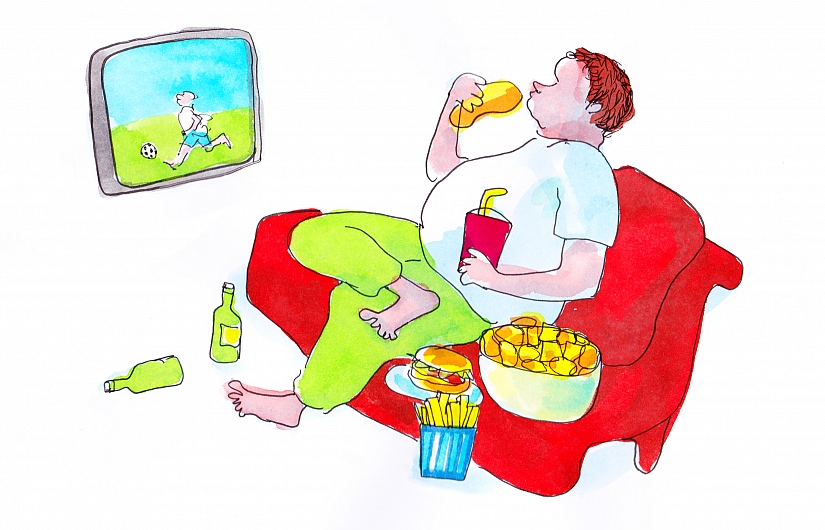
BiG mistakes
'Salt, saturated and trans fatty acids, white bread, low consumption of fresh fruit and vegetables and irregular meals – often only once in the evening, are only some of the key features of the unhealthy diet in Bulgaria, which leads to obesity" Dr. Nikolova sums up. The standard consumption of salt is 5-6 gr. a day, while in Bulgaria we consume15-16 grams and the sodium in it directly affects our body by making it retain liquids and weight and thus causing swelling.
Palaeolithic know-how
We already told you how much food habits have changed during the past centuries and millennia. But what would happen if we really began eating like our Palaeolithic ancestors? It can be surely assumed that only nice things follow.
Nowadays we get about 30 to35 per cent of our energy from fats - as much as our ancients did. Back then people derived complete protein from meat and incomplete protein from nuts and pulses. However, they consumed almost no carbohydrates. Needless to say, nowadays carbohydrates account for 60%-70% of our energy intake.

The fact that our ancestors did not do so means that our body does not need it. Sugars are good for the body, they provide it with powerful nutrition, but only if it can burn them quickly. That especially applies for simple carbohydrates, which should not account for more than 10% of all calories. Simple carbohydrates are everything, based on white sugar. Just a century ago, the annual consumption of sugar was only a kilogram, whereas nowadays that amount has risen to a three-digit figure.
Fatty genes
Research in this field has recently experienced a real boom... and all that has been just enough to prove that genes are unlikely to be the key to finding the panacea or some brilliant solution.
Different studies of twins or whole families have shown that genetic variations account for about 30% of the risk of obesity. Unfortunately, it would be an overstatement to say that there is a single gene or a group of genes to be held responsible. So far, about 500 have been linked to predisposal to obesity. Some influence obesity directly, others are responsible for the metabolic pathways, for metabolism itself or for the percentage of fat in the body. Alas, as far as DNA is concerned, the reason is not in a particular gene, but rather in the accumulation of factors.
The common obesity is a polygenic condition. The latest large-scale research has isolated a further 40 genes - but they are the cause of obesity in only... 1.3% of the cases observed. So, one thing doctors are positive about is that even if we are predisposed, as long as we are cautious and follow the general rules, we will never have those rounded shapes. Unless, of course, the obesity is the result of a different health issue, whether it be a psychological or an endocrine problem.
The fatty genes isolated so far are mostly responsible for leptin production. Together with insulin and ghrelin, leptin is one of the most important hormones affecting our sense of hunger. The hypothalamus in our brain is in charge of regulating those hormones. Leptin is a relatively recent discovery and it is secreted by fat cells. It is leptin that is influenced by the accumulation of fat around the belly. Variations in its level, though, occur only after a long-term change - if we have gained 2-3 kilos during the holidays, which we will quickly lose afterwards, this will not influence leptin levels and therefore hunger.

Leptin is also responsible for the unpleasant feeling of constant hunger. Its levels are relatively stable during the day, unlike the erratic levels of insulin and ghrelin. But these are by far not the only culprits responsible for hunger and weight gain. At present we know about 10 hormones, some of which have only come to light in the previous few years. Therefore, the system is exceptionally complex and we have yet a lot to learn about it.
Another factor which has been proved to be of surprising significance are the microorganisms inside us. Recently, a lot more has become discovered concerning the microbiome - the genes of the bacteria in our gastrointestinal tract. We owe this new knowledge to the American Professor Dr. Jeffrey Gordon.
To beat the biome
More and more biologists are inclined to view the human body not just as an individual, but as a whole ecosystem - it is enough to say that about 100 trillion bacteria live in the intestines of an average adult- ten times more cells than their own. Also, these bacteria are very diverse. A human egg and a spermatozoid provide about 23 thousand possible genes. A microbiome has 3 million!
It is our third genome, after our own and the mitochondrial DNA. As it turns out, there is a direct correlation with the absorption of food and medication and it even controls the immune system. Its composition determines whether a person is fat or thin. Because of it we can even... catch the "obesity virus". This happens when we eat foods which are unusual for our organism, thus changing the biome.
Some bacteria are better at decomposing waste substances than others. That is why some people retain more sugars and fats in their stomachs. Have you ever thought about why much of the meat on the market contains residual antibiotics - what would the reason for feeding them to cattle be? The same - deprived of the microorganisms in their stomachs, calves accumulate more muscle mass and fat.
There are twenty-six kinds of bacteria living in the stomach, which are known to have a direct connection to the issue. Studies began after two scientists analyzed data gathered from 43,000 Americans, who had been doing aerobics regularly for 25 years. The ones who were overweight were subjected to further testing. It turned out that almost half of them had normal metabolism and that their health indicators did not differ from those of people with average weight. This led scientists to research the influence of the biome. It will have to be studied further in order to better understand how exactly we could influence it so as to nurture only the right type of microorganisms, which will guarantee better metabolism.

Protein bomb
Less than a decade ago, the high-protein diet with heavy emphasis on meat, created by the French doctor Pierre Dukan caused a sensation. Many managed to lose kilograms quickly, but subsequently acquired an array of digestion and kidney problems. Modern medicine is explicit: such high levels of protein are unnatural for our bodies.
A year ago this was confirmed even by... the court. Pierre Dukan lost the case filed against him by the competition, who blamed the diet he had created for various health issues...
The Chinese trick
Auricular acupuncture, or ear point needle therapy, has been one of the weight-loss hits of the past few years.
Their stimulation acts as a TV remote, with whose help one can control various bodily functions. One of those is weight-loss, especially when the therapy is combined with a diet. Auricular acupuncture has been proven to have a weight-loss effect and aid food restriction. It suppresses the feeling of hunger at both central and peripheral level. People who eat a bar of chocolate a day are surprised to find that they can go without it after the very first session.
Expect in our next issue an interview with Dr. Georgi Georgiev - a physiotherapy and rehabilitation specialist at the Military Medical Academy, known for his in-depth knowledge of Eastern medicine.
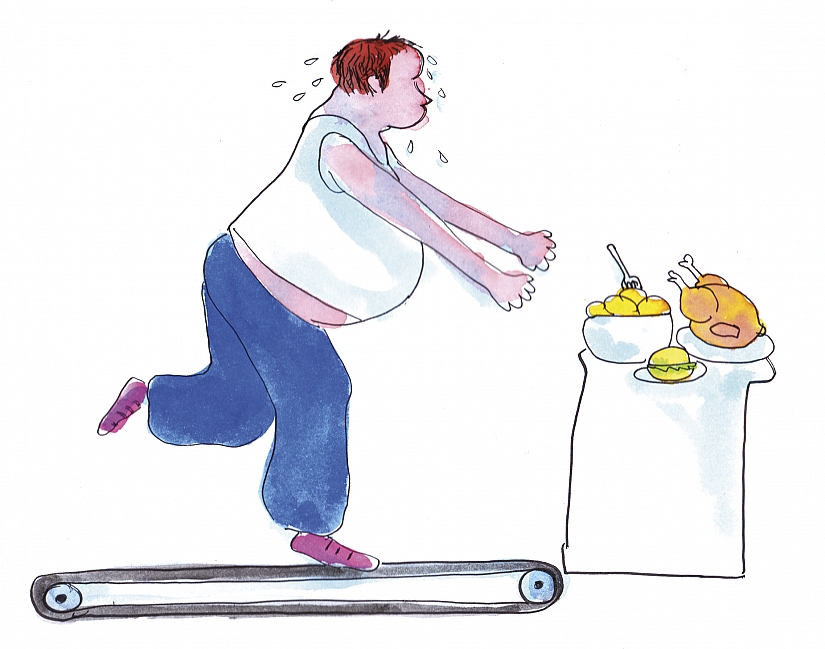
1500 calories of tenderness
Yes, we have all heard the tale of the frightening kilocalories, repeated like a mantra. But why are there people who eat 1000 kcal per day and stay fat while others consume 2500 kcal per day and lose weight? And how do we know what our natural calorific needs are? Why is our energy expenditure like a car's? If we fill in the same amount of energy, the jeep will use it up in a few kilometres, whereas a small car will go much further.
'Everything is very individual, but generally speaking, our energy expenditure, what we burn every day, can be divided into several parts', explains Dr. Nikolova. Firstly, there is the so-called basal metabolism - the energy we burn at rest in order to maintain the function of our organs and systems. Its level depends on the composition of our body - the more fat and the less muscle mass there is, the more metabolism slows down, because it is muscles that actively burn calories. That is why men have faster metabolism - they just have more muscle mass.
Apart from that, there is the energy we spend on physical activity. According to the system adopted by the WHO, our basal metabolism is multiplied by a special coefficient depending on our physical activity - 1.5, 1.7 and 1.9 for low, medium and high degrees of activity respectively. In other words, if your basal metabolism is 1000 kcal and you do sports actively you will burn 1900 a day, compared to 1500 if you don't get up from your desk.
Sports alone are not enough to win the battle. You cannot lose weight through just sports - basal metabolism speeds up, you become hungrier, you eat more. Nevertheless, it is important when we want to maintain our weight and a balance is sought between intake and expenditure. It is also crucial when it comes to maintaining the active muscle mass, or losing weight at the expense of fats alone. Without sports, the body burns glycogen from liver first, afterwards from the muscles and only after that it reaches the fats. A body with no muscles hardly makes for the healthiest looks possible...
The expenditure is highly dependent on what we eat - the absorption, digestion and processing of fats, proteins and carbohydrates respectively require very different levels of energy. Many diets are based on proteins, as they speed up our metabolism. When we consume a combination of protein, carbohydrates and fats, our metabolic speed increases by 10-15 per cent. If there is only protein in our diet, that rate is as high as 30%- 40%, whereas it is 4%-7% for carbohydrates and 4%-14% for fats.

Metabolism also depends on the frequency of our meals. According to specialists we should eat 4-5 times a day. If we skip breakfast, the basal metabolism decreases by about 20%! The worst case scenario, unfortunately very popular in our part of the world, is the once-a-day heavy-duty evening meal - it strongly suppresses the metabolism, because the organism has been starving the whole day.
The same principle applies to strict diets - they always suppress basal metabolism.
The natural response of the body is to try and minimize expenditure, in order to prepare for the period of starvation. That is why it is so common for people who go on drastic 100-1200 kilocalorie diets to fail to lose even a single kilogram. "Although the calorie intake is reduced, the basal metabolism also slows down – you are starving. At a certain point, however, you do get some food, since your appetite is increasing. When you are starving yourself, leptin levels also drop. Suddenly, hunger becomes stronger, you eat more and it sticks straight on,' Dr. Nikolova sums up.
Degrees without calories
Alcohol not only exposes us to health risks, but it is also a source of empty calories for the body, and at that not just a few of them. A gram of alcohol equals 7 kcal, while a gram of fat is 9! You need about an hour of walking to burn 1-2 glasses of wine. Therefore, it is good to stick to moderation. Doctors view 500 ml of beer, which accounts for 140 kilocalories, as the daily standard for men. That is the equivalent of 150 ml of wine (105 kcal) or 50 ml of hard liquor (110 kcal). Ladies should consume half as much.
Having the example of the 100 calories in mind, it becomes clear why people who drink a lot every evening would suddenly lose weight if they just quit their unhealthy habit.
Addictive foods
Sweet, salty and spicy foods give us pleasure, but they are like drugs. The more we consume, the more we want. That is why it is important not to let our bodies to get used to high doses. By default, a small piece of chocolate brings the same pleasure as a whole bar – both will never leave us fully satisfied. If we are to drink a glass of water after the bite, however, the craving will be less strong.

Swallow the belly
One kilogram of fat contains 9000 kilocalories. Dance hard for 4 hours, do 12 000 squats and you will process them without any problem. Exercise, burn 3500 calories and one kilo is lost and gone forever... Now you understand why that is not as simple as it sounds and why dietetics is not an exact science. Obviously, it would be best not to become overweight in the fist place, but if this has already happened, how can things change?
Unfortunately, when it comes to this, it is all actually old news - it is clear that the solution lies with a balanced diet, equally distributed throughout through the day, and with physical activity. And most importantly, the key to success is patience. Drawing on their experience dieticians recommend that changes should be gradual - no one can amend their habits all at once.
A diet which is as varied as possible can also be beneficial. It is best when a large variety of different types of foods are consumed, because in that way your body will get used to everything. We surprise it, in a way, with new food, for which it does not produce the right type of enzymes and the result is that in the process we put on fewer extra kilos.
The food regimen is the most important factor. Provided that you eat frequently but in small amounts, even if you indulge yourself with a little of the forbidden foods in the earlier hours of the day – such as sweets, pastry and fatty foods, it is not such a problem. Of course, digestion time depends on the type of meal - some things are "absorbed" by the body in minutes, while a steak can take up to 9 hours to be processed.
As we already mentioned, the key lies in perseverance. Those 100 calories, which are less than a can of soda, if saved every day, are much more effective than blitz hunger.
Otherwise, the result is the notorious yo-yo effect - we lose a few kilos, our friends admire us but in a month or so it all comes back or even worse – we have put back on more than we had lost. The basal metabolism has been suppressed and as a consequence whatever you might eat will stay with you for a long time. You lose 5, you gain 7.
It is accepted that a certain weight becomes yours after you retain it for 6 months or, even better - a year. At the present, science is focusing precisely on that - how to maintain the accomplished results.
That stresses you out, making your blood pressure and blood sugar rise and, having starved for a week, you find yourself craving food to make up for all the suffering. And it sounds so easy, doesn't it? Eat less, exclude fat and sugar from your diet, walk a lot to your workplace every day and there is no way you are NOT going to lose weight…
Then why is it so difficult? Why are more than a billion people around the world overweight? And this is not just about your self-confidence or sex-appeal, but it can cause a wide array of diseases, some of which potentially life-threatening.
In the past decade alone, more than 25000 books have been published on the topic – on diets, on various approaches and on secrets. Most of them turn into best-sellers – that is how important this topic is for so many people.
There is no way to fit it all in the following pages, not even a tiny bit of it, but we will try to summarize what is most important. Why is the fight against obesity so hard and what are the most common mistakes we make? Why is it important to lead that unfair fight and what do we risk if we fail to win? These questions need and will receive their answer.
Kilos by the dozen
Genes, bad lifestyle and stomach bacteria are to blame for our obesity and that can be dangerous Over the last years our population has been shrinking. Yes, we do hear that cliché quite often and we do love repeating it, never pausing to thin how inaccurate it actually is, at least when it comes to the literal size of our population. We are used to mocking the West for their obesity and unhealthy eating habits; although it seems that we are desperately trying not to fall too far behind.
What we are dealing with here is a problem, which is gradually becoming global. However, it was only a few years ago that that the UN officially reported that the number of people suffering from the consequences of overeating already exceeds the number of those who do not have enough to eat.
What this means is that we have yet to see the full scale of the problem in many countries. According to the most recent data, 1.4 billion people aged 18 and above are overweight (out of a total of 7 billion) and at least 300 million fall into the obese category. At least 3 million adults die as a direct consequence of obesity each year.
This is data announced by the World Health Organization which recently appealed to world leaders to take action. The health hazards resulting from obesity are comparable to those of smoking. Unlike obesity, however, smoking is much more often given special attention by the government despite the fact that no other health hazard has been increasing at such alarming rates over the last decades.

Excess weight in children is the most dangerous and the most difficult to combat. According to data gathered in 2010, 40% of adolescents aged 15 and above and 10% of the children are out of the normal body weight range. That is twice as many as a decade ago!
Kilogram limits
The most common causes of death in Bulgaria are heart disease (2/3 of all cases) and cancer with 13-15% of all deaths. Suffice to say that both are closely connected to weight. But enough with the frightening figures. In order to better understand what those numbers actually mean, let us explain what exactly what they signify. To the unacquainted, it might seem easy to determine whether a person truly is outside the healthy standards. Over the last few years the Body Mass Index (BMI) has been widely accepted as a valid criterion.
It is calculated as the weight is divided by the height squared. For example, if you are 1.70m tall, which squared equals 2.89, and you divide your body weight, for instance 70kg, by this result, you have a BMI of 24. It is precisely BMI that is the criterion the above-mentioned statistics are based on. It varies slightly for the different races but for the Caucasians the normal range of BMI is fixed at 18.5- 25. In case of a BMI of up to 29.9 we speak of being overweight, any higher would indicate different degrees of obesity.

'This is an over-generalised criterion which can only be used as guidance' explains Dr Maria Nikolova, specialist in nutrition science and dietetics, assistant professor at the Medical University of Sofia. "If a person is within this range, it does not necessarily mean that they have normal body composition. They might have elevated percentage of fat at the expense of active muscle mass.
The same applies for those outside the normal range. A man who works out has higher body weight owing to his muscle mass – for him that is definitely not a problem." For these reasons other criteria have gradually been included to more accurately assess each person's condition. There are more and more modern scales able to measure the percentage of fat in the body.
Trans-danger
One of the main causes of obesity as well as of other socially important diseases is the excessive consumption of trans fatty acids, which are the artificially hydrogenated vegetable oils incorporating themselves permanently into cell membranes. This is a chemical process during which fats are processed and artificially enriched with hydrogen atoms. If you pay close attention, you can easily identify them; they stick to the palette, to the teeth, the sensation is totally different. Trans-fatty acids are particularly dangerous for children, who are prone to choose the foods which contain them, such as chocolate, candies, sweets, waffles, deep-fried foods and chips.


Not hunger, but thirst
Liquids are of crucial importance in losing weight. People often mistake thirst for hunger. The problem is that the feeling of thirst comes when you are already 10% dehydrated. The lack of liquids in the body slows down metabolism; it can affect our concentration and ability to work or cause discomfort. Therefore the absolute minimum of water intake per day is six to eight glasses or two litres daily. Water is our best assistant when losing weight. In the process of burning fat a number of waste products such as purines, fatty acids and ketones are also released in order to be excreted through the liver and the kidneys.
A new hit
The Zone Diet has become very popular lately. It was created by dietitian Barry Sears and to a large extent it relies heavily on what we are sharing with you on these pages. The doctor's motto is "Eat and you will lose weight" with a balanced combination of protein, carbohydrates and vegetable fats at the core of his system. The main rule is that carbohydrates should constitute 40% of your diet while protein and fat should be 30% each. Foods are divided into two blocks: a protein block and a carbohydrate block. It is recommended that you alternate between them, consuming an equal number of blocks from each group. The doctor offers various combinations which observe this ratio and promises a weight loss of 5 kilograms in two weeks. The strange name of the system is derived from the idea that there is state in which the organism operates most efficiently.
Electronic measuring is probably the most common method – a weak imperceptible electric current is run through our body and special detectors record its resistance. As the resistance varies depending on the type of tissue, the total percentage of fat can be determined. Of course, this method is not very accurate, but it is sufficiently accurate for check-ups and monitoring.
Fat mass in the body is measured either in kilograms or in percentage terms. It is usually divided into subcutaneous and visceral fat, which is the medical term for the fat deposits around the belly. Visceral fat is measured in absolute terms, with the norm being between 1 and 14. What does this number signify? If it is three, for example, then that means that you have 30cm2 of fatty tissue distributed around your organs. Waist circumference is, according to doctors, another simple, yet effective criterion. Both are related to what is probably the greatest downside of being overweight – what we lovingly call the potbelly.



Evil belly
While just a decade ago doctors considered each kilogram over the standards as problematic, nowadays they are of the opinion that it is belly fat the poses the greatest risks. The fatty tissue gradually enwraps the organs and not only does it hinder their normal function, but it also begins to function as an entirely independent endocrine gland – it secretes hormones which have a devastating effect on the body, inflammation factors, prostaglandins and interleukins, which disturb the entire metabolic process, Dr. Nikolova explains. Subcutaneous fat, which we do not like either, is much less harmful. It is just a depot where excess calories are stored in the form of fat. However, other than making us feel heavy, they do not pose a direct threat, unlike the fat stored around the belly.
The children of hydrogen and oxygen
Now that we have "scared" you with all this information about carbohydrates, a further explanation is in order. Chemically speaking, they are composed of carbon, hydrogen and oxygen. Apart from water, they are the main building blocks of organic matter; if you simply dry them, they would account for 20% of animal weight and 80% of plant weight.
The foods richest in carbohydrates are sweets, fizzy drinks and bread as well as fruit, pulses, potatoes, rice, maize, oats and cereals. While they indeed do bring energy not a single carbohydrate is essential for our body. Here is the carbohydrate content of some foods in percentage terms: spaghetti – 75%, white rice – 73%, popcorn – 68%, corn – 65%, wheat – 65%, chips – 53% white bread – 48%, rye bread – 40%, French fries – 35%, boiled potatoes – 14%. We should not forget, however, that glucose is the only source of energy for the brain. The daily carbohydrate intake should not be less than 180 grams.
Intolerance
A common reason for being overweight are nutritional intolerances. These are a particular type or allergies - mostly to artificial food additives - like the dangerous E-labelled additives we have already told you about in 8 magazine.
Many people are unaware that they have developed food intolerance - it does not show on regular laboratory tests and can only be detected by the increased number of antibodies. It could happen even to people who are extremely careful and whose diet consists almost entirely of organic foods. These are delayed immune reactions of the body. Antibodies are formed, which disturb the normal energy processes in the body. This leads to weight gain, as well as to other problems such as abdominal swelling, problematic skin, persistent headaches and depression.


While welcoming the arrival of spring, it is advisable to follow several recommendations when it comes to weight gain. It is important to boost our immune system, dietary specialists recommend. A diet rich in calories or carbohydrates suppresses it. The immune system is boosted in the first place by complete or whole proteins. Foods rich in vitamin D and sunbathing are also beneficial. Although we are a relatively warm country, 76% of Bulgarians have a vitamin D deficiency.
Vitamin D not only promotes bone health, but it also helps prevent autoimmune diseases, 14 types of cancer, diabetes... and, of course, obesity. Naturally, we all know that we should include more fresh fruit and vegetables into our diet. Here the colour principle applies – it is good to alternate between the green, the yellow and the red gifts of Nature.
Today the generally accepted waistline standards, above which there are potential health risks, are 94 cm for men and 80 for women. If the measurements exceed these limits, this is an indication for a problem called metabolic syndrome. Doctors are convinced we will be hearing more and more about it in the future, precisely because of the increasingly common problems caused by obesity.
Once present, the metabolic syndrome increases the risks of coronary disease - high blood pressure, strokes, heart attacks and several types of cancer, particularly those affecting the colon and the female reproductive system, diabetes, gout, non-alcoholic hepatitis... Studies show that reducing the weight by 5 to 10 kilograms decreases mortality rates by a staggering 25%!
Alas, as nearly everybody perfectly well knows, belly fat is the hardest to get rid of. If one reduces one's overall fat by 10% that will lead to only 5% less visceral fat.
Modern medicine, though, recommends that we should not be seduced by the promise of rapid weight loss, because it is unhealthy for our bodies." People come with unrealistic expectations and wishes - to immediately drop from 90 to 70 kilograms. That is neither realistic or achievable, nor healthy. The healthy rate of weight loss is half a kilogram to one kilo per week' Dr. Nikolova says, drawing on her experience. According to her, with the exception of particularly severe cases, even a 2-3 kilo loss may have unexpectedly strong influence on all the above-mentioned complications related to obesity diabetes type 2, hypertension, lipid level disturbances.
Not a goal but a journey
'I will never get tired of saying this - losing weight is a journey, not a destination,' explains Dr. Nikolova. People should arm themselves with patience and should not expect quick results, which, according to her, is the most frequent obstacle preventing them from effectively coping with the problem.
Perseverance is also important so that weight gain does not recur. Eighty percent of those who seek help and successfully overcome their obesity regain the lost weight in the next 3 to 5 years. That is why there has been an ongoing discussion of the participation of psychologists in the work of dieticians. Ever more often, obesity is being classified not only as a physiological, but also as a psychological problem - a food disorder, classified in the same group as bulimia and anorexia.
It is not unusual for a problem with excess kilograms to conceal a psychological problem related to a depression or low self-esteem. That is why in many western countries like France, a visit to a dietician begins with a simple psychological test. The patient is given a questionnaire, where the answers are arranged in five groups, covering, respectively, the level of self-esteem, body image, depression, inability to express emotion and self- sufficiency. Once the lowest indicators are pinpointed, the next step is a consultation with a professional psychologist. Only when all five criteria return to standard is a diet recommended as a result.
All this is an attempt to identify the factors which can impede change, for, as dieticians say, 50% of the success lies in finding out why the patient has gained weight in the first place. It is not by chance that such a lot of emphasis is placed on control – control by a dietician on the one hand, and on the other - by the patients themselves.
Fats & evolution
By the way, you have probably never heard of an obese lion or a deer - Nature is far from benevolent towards both predators and prey. Still, nowadays animals are beginning to get fat as well - it was not that long ago that treadmills for cats and dogs became popular in the US... Hence it is obvious that the problem stems from civilization, which has brought about both sides of the fat coin - hyper-energy food and sedentary lifestyle. And here comes the logical question – what is the role of evolution here? Wasn't its function to adapt living creatures to their environment and shouldn't the potbelly have long become a rudimentary organ? Alas, there is no way we could possible find out, since the changes in our lifestyle by far outpace the natural evolutionary processes.
Our genome has changed very little over the past 10 000 years - by no more than 0.005%. Hence, such a considerable change would probably require millions of years to take place.
'Our body is suited to the lifestyle of a hunter-gatherer - we have an economical genotype. Prehistoric man ran after wild animals, gathered seeds, roots and herbs and periods of famine were only too frequent. Every kilocalorie was precious and as a result those genes which helped us preserve energy got passed down in the selection process,' adds Dr. Nikolova. Today, those same genes which helped us survive are causing problems, because our way of life has changed drastically in less than a century.
One of the greatest changes has been in the realm of fats. It is believed that the prehistoric man consumed equal quantities of both groups - omega-3 fatty acids derived from seeds, fish, the mother's milk and omega-6 from plant oils. Today that ratio has changed to around 1 to 25, which really caught us and our bodies unprepared. Thus new genes are unlocked which cause inflammation, increase the risk of obesity, diabetes and cardiovascular problems.
All this is further aggravated by the factor of sedentation - slowly and without even knowing it we decrease the amount of physical activity in our lives. The invention of the TV remote control alone, which means not having to get up every now and then, has reduced our daily caloric expenditure by 50 kcal. It has been estimated that a 100 kcal reduction of our daily intake guarantees a fat loss of about 2 kg per year, which is why we should start to appreciate such small energy expenditures.
Yet, there is even more. We know that there are many slim people who eat a lot and yet remain scrawny. Then is it not logical to ask: is the problem sometimes encoded in our genes?

Childish
Child obesity is an increasingly pressing problem. If one parent is obese, the risk for their offspring hovers between 30% and 50%. But if both parents are overweight, that risk soars to 80%. That may lead us to believe that the upbringing in the family is a major factor. It is clear that if a child sees his or her parents eating once a day a highly calorific meal with an emphasis on deep-fried foods, the child will do the same. There is no one else but the parents to teach those children to choose fresh fruit and vegetables.
An overweight child becomes an overweight youth, and then - an overweight adult. Many children have already developed a metabolic syndrome with high blood pressure and diabetes. The main problem in their case is that there is no way to impose severe restrictions as they need to wholesome food in their period of growth. If one imposes too many restrictions, they take yet another risk – the one of causing food disorders such as anorexia.
An overweight child becomes an overweight youth, and then - an overweight adult. Many children have already developed a metabolic syndrome with high blood pressure and diabetes. The main problem in their case is that there is no way to impose severe restrictions as they need to wholesome food in their period of growth. If one imposes too many restrictions, they take yet another risk – the one of causing food disorders such as anorexia.
Women & fats
Now that we know the problems stem from the belly fat rather than from the weight itself, let us have a closer look at how these measurements can vary.
On the one hand, it should be noted that ladies, for evolutionary reasons, normally have 5% more body fat than men with the same BMI.
Differences depend on age as well - we have all observed this phenomenon. For example, according to the latest research conducted in Europe, 13.2% of men and 10.3% of women in their thirties are have above-average waistlines and are at risk. Things take a sharp turn later on - men have already started forming a potbelly before they are in their fifties (40.1% compared to 35.6% for the ladies), whereas the gentle sex takes the lead in the sixth decade of their lives with 45.9% of women above the norm, in comparison to 42.7% of men.
Why is this important? Because, if we take age into account, we can be more aware as to when exactly we are at risk of inflicting the dangerous syndrome upon ourselves. It is much easier not to let the fat accumulate, than to burn it afterwards.

BiG mistakes
'Salt, saturated and trans fatty acids, white bread, low consumption of fresh fruit and vegetables and irregular meals – often only once in the evening, are only some of the key features of the unhealthy diet in Bulgaria, which leads to obesity" Dr. Nikolova sums up. The standard consumption of salt is 5-6 gr. a day, while in Bulgaria we consume15-16 grams and the sodium in it directly affects our body by making it retain liquids and weight and thus causing swelling.
Palaeolithic know-how
We already told you how much food habits have changed during the past centuries and millennia. But what would happen if we really began eating like our Palaeolithic ancestors? It can be surely assumed that only nice things follow.
Nowadays we get about 30 to35 per cent of our energy from fats - as much as our ancients did. Back then people derived complete protein from meat and incomplete protein from nuts and pulses. However, they consumed almost no carbohydrates. Needless to say, nowadays carbohydrates account for 60%-70% of our energy intake.

The fact that our ancestors did not do so means that our body does not need it. Sugars are good for the body, they provide it with powerful nutrition, but only if it can burn them quickly. That especially applies for simple carbohydrates, which should not account for more than 10% of all calories. Simple carbohydrates are everything, based on white sugar. Just a century ago, the annual consumption of sugar was only a kilogram, whereas nowadays that amount has risen to a three-digit figure.
Fatty genes
Research in this field has recently experienced a real boom... and all that has been just enough to prove that genes are unlikely to be the key to finding the panacea or some brilliant solution.
Different studies of twins or whole families have shown that genetic variations account for about 30% of the risk of obesity. Unfortunately, it would be an overstatement to say that there is a single gene or a group of genes to be held responsible. So far, about 500 have been linked to predisposal to obesity. Some influence obesity directly, others are responsible for the metabolic pathways, for metabolism itself or for the percentage of fat in the body. Alas, as far as DNA is concerned, the reason is not in a particular gene, but rather in the accumulation of factors.
The common obesity is a polygenic condition. The latest large-scale research has isolated a further 40 genes - but they are the cause of obesity in only... 1.3% of the cases observed. So, one thing doctors are positive about is that even if we are predisposed, as long as we are cautious and follow the general rules, we will never have those rounded shapes. Unless, of course, the obesity is the result of a different health issue, whether it be a psychological or an endocrine problem.
The fatty genes isolated so far are mostly responsible for leptin production. Together with insulin and ghrelin, leptin is one of the most important hormones affecting our sense of hunger. The hypothalamus in our brain is in charge of regulating those hormones. Leptin is a relatively recent discovery and it is secreted by fat cells. It is leptin that is influenced by the accumulation of fat around the belly. Variations in its level, though, occur only after a long-term change - if we have gained 2-3 kilos during the holidays, which we will quickly lose afterwards, this will not influence leptin levels and therefore hunger.

Another factor which has been proved to be of surprising significance are the microorganisms inside us. Recently, a lot more has become discovered concerning the microbiome - the genes of the bacteria in our gastrointestinal tract. We owe this new knowledge to the American Professor Dr. Jeffrey Gordon.
To beat the biome
More and more biologists are inclined to view the human body not just as an individual, but as a whole ecosystem - it is enough to say that about 100 trillion bacteria live in the intestines of an average adult- ten times more cells than their own. Also, these bacteria are very diverse. A human egg and a spermatozoid provide about 23 thousand possible genes. A microbiome has 3 million!
It is our third genome, after our own and the mitochondrial DNA. As it turns out, there is a direct correlation with the absorption of food and medication and it even controls the immune system. Its composition determines whether a person is fat or thin. Because of it we can even... catch the "obesity virus". This happens when we eat foods which are unusual for our organism, thus changing the biome.
Some bacteria are better at decomposing waste substances than others. That is why some people retain more sugars and fats in their stomachs. Have you ever thought about why much of the meat on the market contains residual antibiotics - what would the reason for feeding them to cattle be? The same - deprived of the microorganisms in their stomachs, calves accumulate more muscle mass and fat.
There are twenty-six kinds of bacteria living in the stomach, which are known to have a direct connection to the issue. Studies began after two scientists analyzed data gathered from 43,000 Americans, who had been doing aerobics regularly for 25 years. The ones who were overweight were subjected to further testing. It turned out that almost half of them had normal metabolism and that their health indicators did not differ from those of people with average weight. This led scientists to research the influence of the biome. It will have to be studied further in order to better understand how exactly we could influence it so as to nurture only the right type of microorganisms, which will guarantee better metabolism.

Less than a decade ago, the high-protein diet with heavy emphasis on meat, created by the French doctor Pierre Dukan caused a sensation. Many managed to lose kilograms quickly, but subsequently acquired an array of digestion and kidney problems. Modern medicine is explicit: such high levels of protein are unnatural for our bodies.
A year ago this was confirmed even by... the court. Pierre Dukan lost the case filed against him by the competition, who blamed the diet he had created for various health issues...
The Chinese trick
Auricular acupuncture, or ear point needle therapy, has been one of the weight-loss hits of the past few years.
Their stimulation acts as a TV remote, with whose help one can control various bodily functions. One of those is weight-loss, especially when the therapy is combined with a diet. Auricular acupuncture has been proven to have a weight-loss effect and aid food restriction. It suppresses the feeling of hunger at both central and peripheral level. People who eat a bar of chocolate a day are surprised to find that they can go without it after the very first session.
Expect in our next issue an interview with Dr. Georgi Georgiev - a physiotherapy and rehabilitation specialist at the Military Medical Academy, known for his in-depth knowledge of Eastern medicine.

1500 calories of tenderness
Yes, we have all heard the tale of the frightening kilocalories, repeated like a mantra. But why are there people who eat 1000 kcal per day and stay fat while others consume 2500 kcal per day and lose weight? And how do we know what our natural calorific needs are? Why is our energy expenditure like a car's? If we fill in the same amount of energy, the jeep will use it up in a few kilometres, whereas a small car will go much further.
'Everything is very individual, but generally speaking, our energy expenditure, what we burn every day, can be divided into several parts', explains Dr. Nikolova. Firstly, there is the so-called basal metabolism - the energy we burn at rest in order to maintain the function of our organs and systems. Its level depends on the composition of our body - the more fat and the less muscle mass there is, the more metabolism slows down, because it is muscles that actively burn calories. That is why men have faster metabolism - they just have more muscle mass.
Apart from that, there is the energy we spend on physical activity. According to the system adopted by the WHO, our basal metabolism is multiplied by a special coefficient depending on our physical activity - 1.5, 1.7 and 1.9 for low, medium and high degrees of activity respectively. In other words, if your basal metabolism is 1000 kcal and you do sports actively you will burn 1900 a day, compared to 1500 if you don't get up from your desk.
Sports alone are not enough to win the battle. You cannot lose weight through just sports - basal metabolism speeds up, you become hungrier, you eat more. Nevertheless, it is important when we want to maintain our weight and a balance is sought between intake and expenditure. It is also crucial when it comes to maintaining the active muscle mass, or losing weight at the expense of fats alone. Without sports, the body burns glycogen from liver first, afterwards from the muscles and only after that it reaches the fats. A body with no muscles hardly makes for the healthiest looks possible...
The expenditure is highly dependent on what we eat - the absorption, digestion and processing of fats, proteins and carbohydrates respectively require very different levels of energy. Many diets are based on proteins, as they speed up our metabolism. When we consume a combination of protein, carbohydrates and fats, our metabolic speed increases by 10-15 per cent. If there is only protein in our diet, that rate is as high as 30%- 40%, whereas it is 4%-7% for carbohydrates and 4%-14% for fats.

Metabolism also depends on the frequency of our meals. According to specialists we should eat 4-5 times a day. If we skip breakfast, the basal metabolism decreases by about 20%! The worst case scenario, unfortunately very popular in our part of the world, is the once-a-day heavy-duty evening meal - it strongly suppresses the metabolism, because the organism has been starving the whole day.
The same principle applies to strict diets - they always suppress basal metabolism.
The natural response of the body is to try and minimize expenditure, in order to prepare for the period of starvation. That is why it is so common for people who go on drastic 100-1200 kilocalorie diets to fail to lose even a single kilogram. "Although the calorie intake is reduced, the basal metabolism also slows down – you are starving. At a certain point, however, you do get some food, since your appetite is increasing. When you are starving yourself, leptin levels also drop. Suddenly, hunger becomes stronger, you eat more and it sticks straight on,' Dr. Nikolova sums up.
Degrees without calories
Alcohol not only exposes us to health risks, but it is also a source of empty calories for the body, and at that not just a few of them. A gram of alcohol equals 7 kcal, while a gram of fat is 9! You need about an hour of walking to burn 1-2 glasses of wine. Therefore, it is good to stick to moderation. Doctors view 500 ml of beer, which accounts for 140 kilocalories, as the daily standard for men. That is the equivalent of 150 ml of wine (105 kcal) or 50 ml of hard liquor (110 kcal). Ladies should consume half as much.
Having the example of the 100 calories in mind, it becomes clear why people who drink a lot every evening would suddenly lose weight if they just quit their unhealthy habit.
Addictive foods
Sweet, salty and spicy foods give us pleasure, but they are like drugs. The more we consume, the more we want. That is why it is important not to let our bodies to get used to high doses. By default, a small piece of chocolate brings the same pleasure as a whole bar – both will never leave us fully satisfied. If we are to drink a glass of water after the bite, however, the craving will be less strong.

One kilogram of fat contains 9000 kilocalories. Dance hard for 4 hours, do 12 000 squats and you will process them without any problem. Exercise, burn 3500 calories and one kilo is lost and gone forever... Now you understand why that is not as simple as it sounds and why dietetics is not an exact science. Obviously, it would be best not to become overweight in the fist place, but if this has already happened, how can things change?
Unfortunately, when it comes to this, it is all actually old news - it is clear that the solution lies with a balanced diet, equally distributed throughout through the day, and with physical activity. And most importantly, the key to success is patience. Drawing on their experience dieticians recommend that changes should be gradual - no one can amend their habits all at once.
A diet which is as varied as possible can also be beneficial. It is best when a large variety of different types of foods are consumed, because in that way your body will get used to everything. We surprise it, in a way, with new food, for which it does not produce the right type of enzymes and the result is that in the process we put on fewer extra kilos.
The food regimen is the most important factor. Provided that you eat frequently but in small amounts, even if you indulge yourself with a little of the forbidden foods in the earlier hours of the day – such as sweets, pastry and fatty foods, it is not such a problem. Of course, digestion time depends on the type of meal - some things are "absorbed" by the body in minutes, while a steak can take up to 9 hours to be processed.
As we already mentioned, the key lies in perseverance. Those 100 calories, which are less than a can of soda, if saved every day, are much more effective than blitz hunger.
Otherwise, the result is the notorious yo-yo effect - we lose a few kilos, our friends admire us but in a month or so it all comes back or even worse – we have put back on more than we had lost. The basal metabolism has been suppressed and as a consequence whatever you might eat will stay with you for a long time. You lose 5, you gain 7.
It is accepted that a certain weight becomes yours after you retain it for 6 months or, even better - a year. At the present, science is focusing precisely on that - how to maintain the accomplished results.



